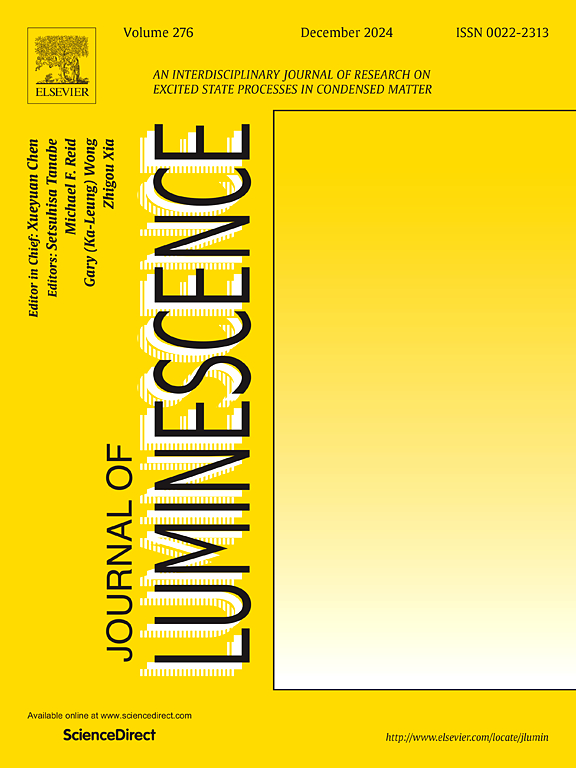Bio inspired synthesis of magnesium oxide nanoparticles: Investigation of their structural, thermal and optical characteristics
IF 3.3
3区 物理与天体物理
Q2 OPTICS
引用次数: 0
Abstract
Bio inspired synthesis of nanoparticles are gaining importance due to their simplicity, cost-effectiveness, ecological friendliness. It facilitates the use of pollution free chemicals and production of less toxic nanoparticles. In the current study, leaf extracts from two different plants (Cassia auriculata and Psidium guajava) were used for the synthesis of magnesium oxide (MgO) nanoparticles. The synthesized nanoparticles were subjected to X-ray diffraction (XRD), Thermogravimetric analysis (TGA), Scanning Electron Microscopy (SEM), Photoluminescence, UV–Visible spectroscopy. XRD confirmed the formation of fine crystals and high purity MgO nanoparticles. The average crystallite size was found to be 27 nm and 13 nm for the MgO nanoparticles synthesized via Cassia auriculata and Psidium guajava extracts respectively. Rietveld refinement was done to know various structural parameters of the synthesized nanoparticles. The optical band gap was found to be around 5.4 eV for both the nanoparticles. TGA data concluded that the optimum temperature of calcination for the formation of MgO nanoparticles is 5000C. SEM revealed the morphology and average particle size of the synthesized nanoparticles. Luminescence emission occurred in visible and UV region which makes them a potential candidate for optoelectronic devices.

仿生合成氧化镁纳米颗粒:结构、热、光学特性的研究
纳米颗粒的生物合成由于其简单、经济、生态友好性而越来越受到重视。它有助于使用无污染化学品和生产毒性较小的纳米颗粒。本研究以两种不同植物决明子(Cassia auriculata)和番石榴(Psidium guajava)的叶提取物为原料合成氧化镁纳米颗粒。对合成的纳米颗粒进行了x射线衍射(XRD)、热重分析(TGA)、扫描电镜(SEM)、光致发光、紫外可见光谱分析。XRD证实形成了细晶和高纯度的MgO纳米颗粒。结果表明,以木耳决明子提取物和番石榴提取物为原料合成的MgO纳米颗粒的平均晶粒尺寸分别为27 nm和13 nm。通过Rietveld细化,得到了合成纳米颗粒的各种结构参数。两种纳米粒子的光学带隙都在5.4 eV左右。TGA数据表明,MgO纳米颗粒的最佳煅烧温度为5000C。SEM显示了合成的纳米颗粒的形貌和平均粒径。发光发射发生在可见光和紫外区,使其成为光电器件的潜在候选。
本文章由计算机程序翻译,如有差异,请以英文原文为准。
求助全文
约1分钟内获得全文
求助全文
来源期刊

Journal of Luminescence
物理-光学
CiteScore
6.70
自引率
13.90%
发文量
850
审稿时长
3.8 months
期刊介绍:
The purpose of the Journal of Luminescence is to provide a means of communication between scientists in different disciplines who share a common interest in the electronic excited states of molecular, ionic and covalent systems, whether crystalline, amorphous, or liquid.
We invite original papers and reviews on such subjects as: exciton and polariton dynamics, dynamics of localized excited states, energy and charge transport in ordered and disordered systems, radiative and non-radiative recombination, relaxation processes, vibronic interactions in electronic excited states, photochemistry in condensed systems, excited state resonance, double resonance, spin dynamics, selective excitation spectroscopy, hole burning, coherent processes in excited states, (e.g. coherent optical transients, photon echoes, transient gratings), multiphoton processes, optical bistability, photochromism, and new techniques for the study of excited states. This list is not intended to be exhaustive. Papers in the traditional areas of optical spectroscopy (absorption, MCD, luminescence, Raman scattering) are welcome. Papers on applications (phosphors, scintillators, electro- and cathodo-luminescence, radiography, bioimaging, solar energy, energy conversion, etc.) are also welcome if they present results of scientific, rather than only technological interest. However, papers containing purely theoretical results, not related to phenomena in the excited states, as well as papers using luminescence spectroscopy to perform routine analytical chemistry or biochemistry procedures, are outside the scope of the journal. Some exceptions will be possible at the discretion of the editors.
 求助内容:
求助内容: 应助结果提醒方式:
应助结果提醒方式:


